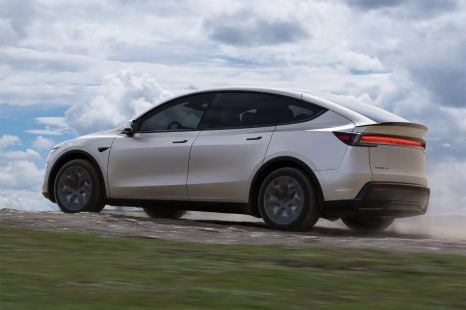

Derek Fung
Tesla Model Y: Long wheelbase model gains EU approval - report
28 Minutes Ago
It might be showing its age in some respects but the Mazda CX-9 remains an elegant, refined, plus-size SUV with a splendid powertrain.
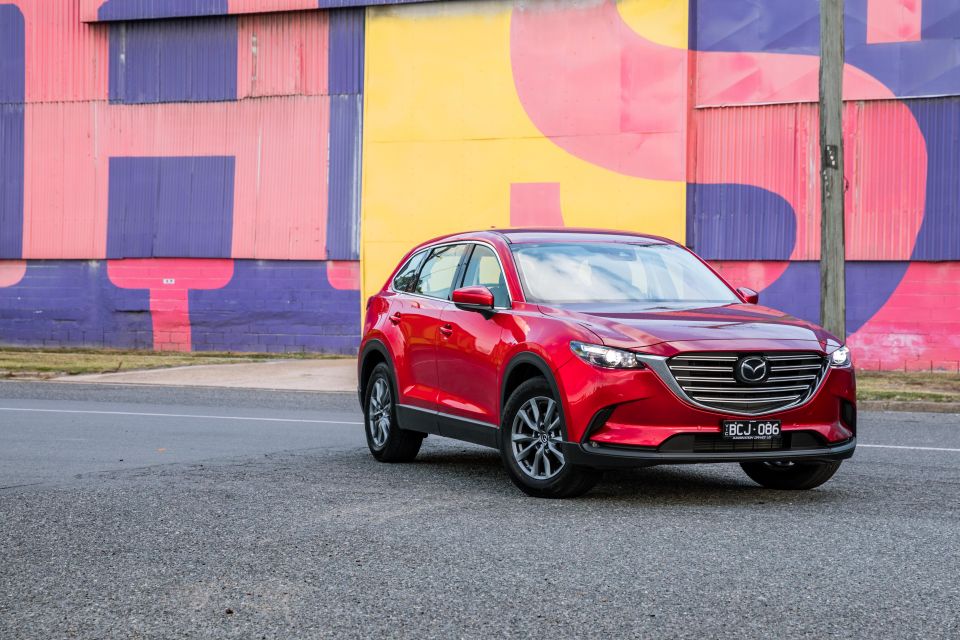
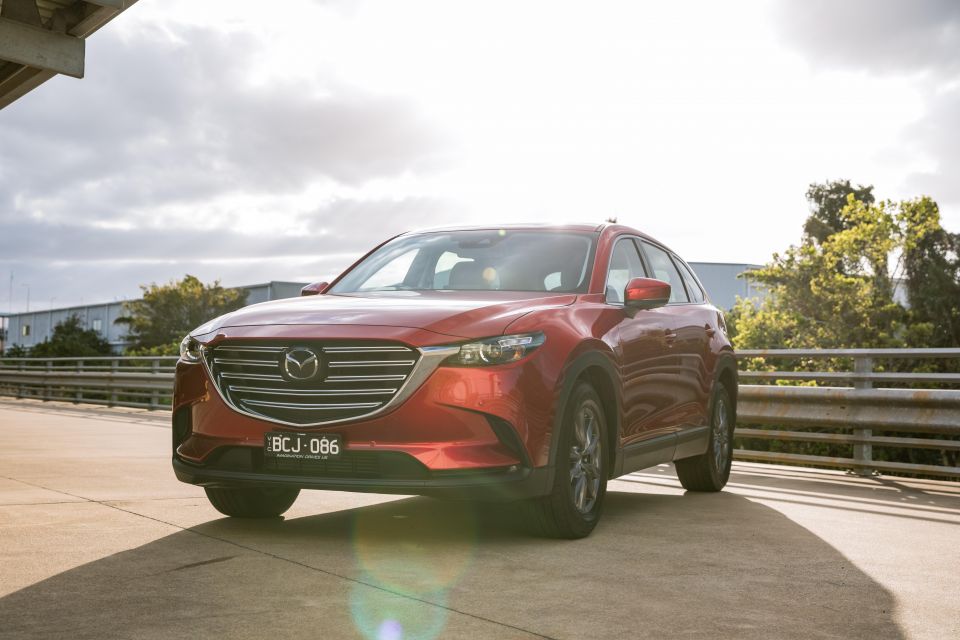

News Editor
New from
$53,310
excl. on-roads

News Editor
New from
$53,310
excl. on-roads


News Editor
New from
$53,310
excl. on-roads

News Editor
New from
$53,310
excl. on-roads
Quickly see how this car stacks up against its competition. Select any benchmark to see more details.
Where expert car reviews meet expert car buying – CarExpert gives you trusted advice, personalised service and real savings on your next new car.
Right now, it’s the calm before the storm. No, I’m not talking about world events – a pandemic is still raging, after all. But in the large SUV segment, there’s about to be a surge in activity.
A new Kia Sorento has landed, with a new Hyundai Santa Fe hot on its heels. The jumbo-sized Hyundai Palisade touches down this year, while a new Toyota Kluger is due in early 2021 and a next-generation Nissan Pathfinder waits in the wings. Even Jeep is working on a large, three-row SUV.
Meanwhile, there’s no new Mazda CX-9 imminent, with the only upcoming update expected to be a new, 10.25-inch infotainment system. That means the 2016-vintage CX-9 will have to keep its head above water in a segment flooded with fresher rivals.


Based on its footprint, this is clearly a crossover targeted at the American market. It measures 5075mm long, 1969mm wide, and rides a 2930mm wheelbase, which makes it longer and only fractionally narrower than a 200-Series Toyota LandCruiser. Yes, she’s a big girl.
And yet while it languishes towards the bottom of its segment in US sales (its Toyota rival outsells it by almost 10-to-1), it’s consistently Australia’s second-favourite large SUV. Only the Kluger beats it here, albeit by a margin of around two-to-one.
Australians may love a big, diesel-powered body-on-frame SUV but there’s clearly a market for a more bitumen-friendly, petrol-powered SUV. Does the CX-9 have what it takes to remain number two in this segment?

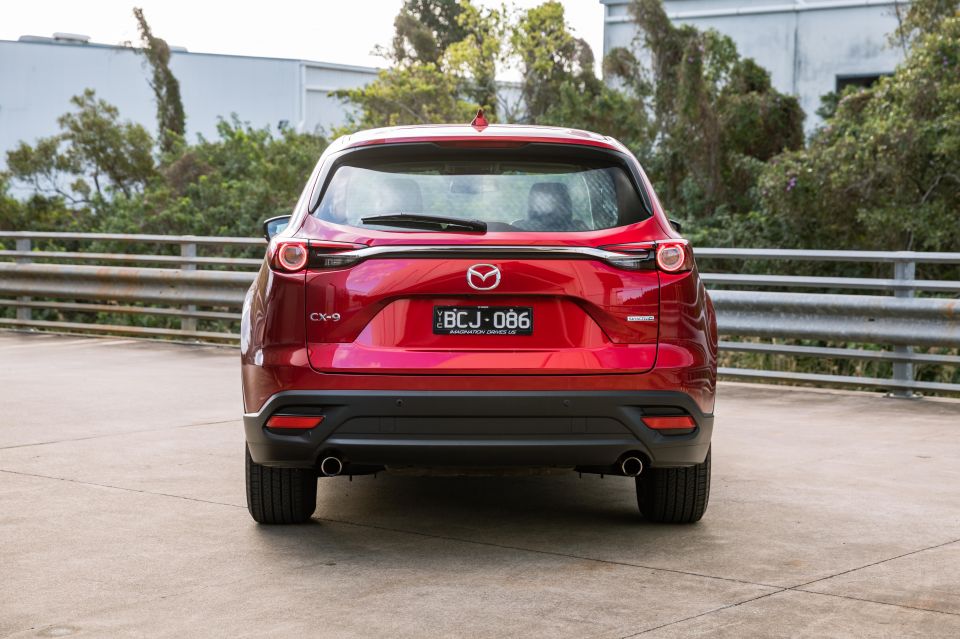
The 2020 CX-9 range opens at $45,920 before on-road costs for the front-wheel drive Sport, topping out at $69,303 before on-roads for the all-wheel drive Azami.
The Touring we tested is the second cheapest of the CX-9’s four trim levels. In front-wheel drive form, it costs $53,310 before on-roads. You can get all-wheel drive with all four CX-9 grades but, much like the rival Kluger, selecting that option adds a whopping $4000 to the price.
Buy your new car without the stress. It's fast, simple and completely free.

Great service from Travis and team, second time I have used this business would not hesitate to recommend them to anyone
Craig C.
Purchased a Ford Ranger in Sunshine Coast, QLD
CarExpert helped Craig save thousands on his Ford Ranger, now let us save you on your next new car.
Find a dealThat price puts it around a Kia Sorento Sport+, Hyundai Santa Fe Elite, Nissan Pathfinder ST-L or Toyota Kluger GXL.
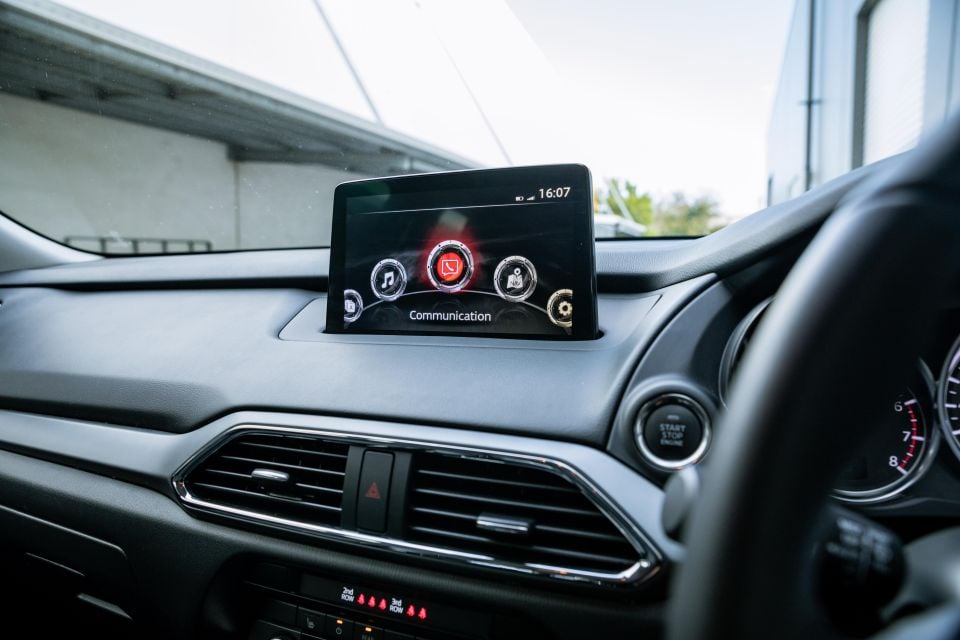
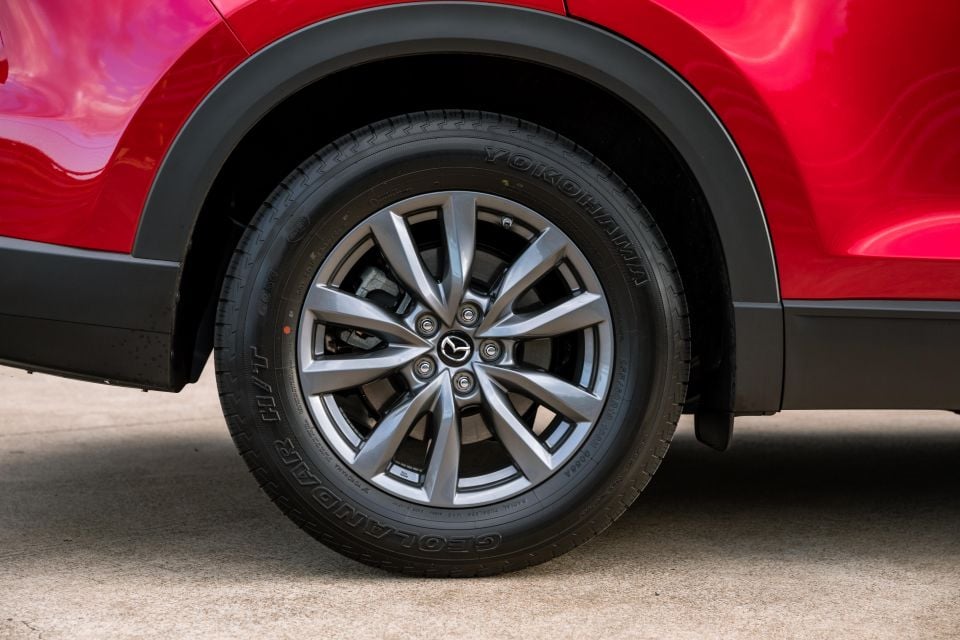
All 2020 CX-9 models come standard with push-button start, automatic headlights with auto high-beam, rain-sensing wipers, power-folding exterior mirrors and adaptive cruise control with Stop&Go.
Inside, you’ll also find tri-zone climate control with controls in the second row and a head-up display. The infotainment system features Apple CarPlay, Android Auto, DAB+ radio and satellite navigation. The Touring increases the touchscreen’s size from seven inches to nine inches, while also adding proximity entry, front parking sensors, heated and power-adjustable front seats and leather upholstery.
Like the Sport, the Touring’s alloy wheels measure 18 inches but they have an odd graphite finish to them. Personally, I’m not a fan.
If you want a power tailgate or more than six speakers for the sound system, you’ll need to step up to the GT.
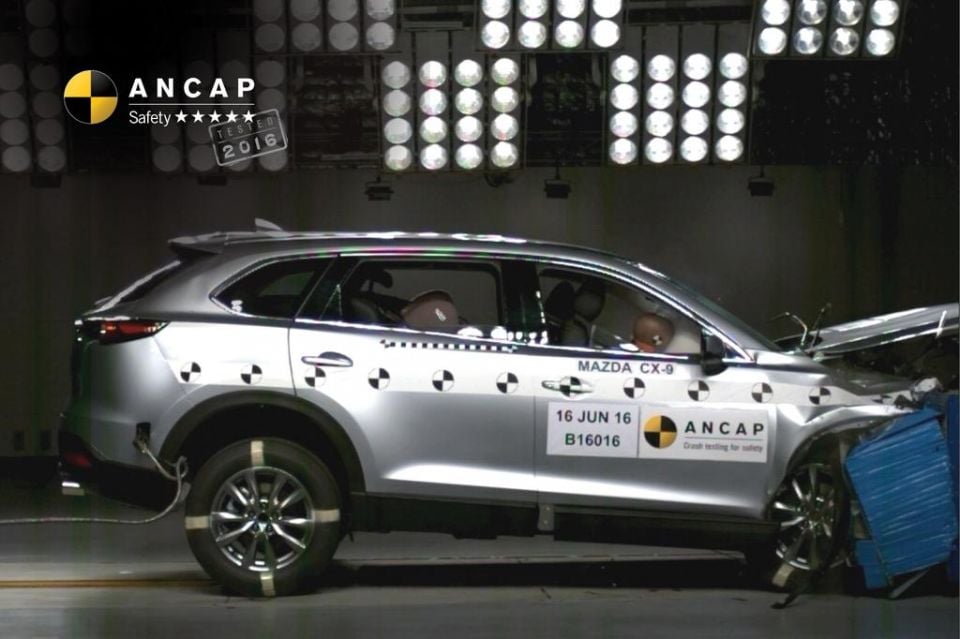
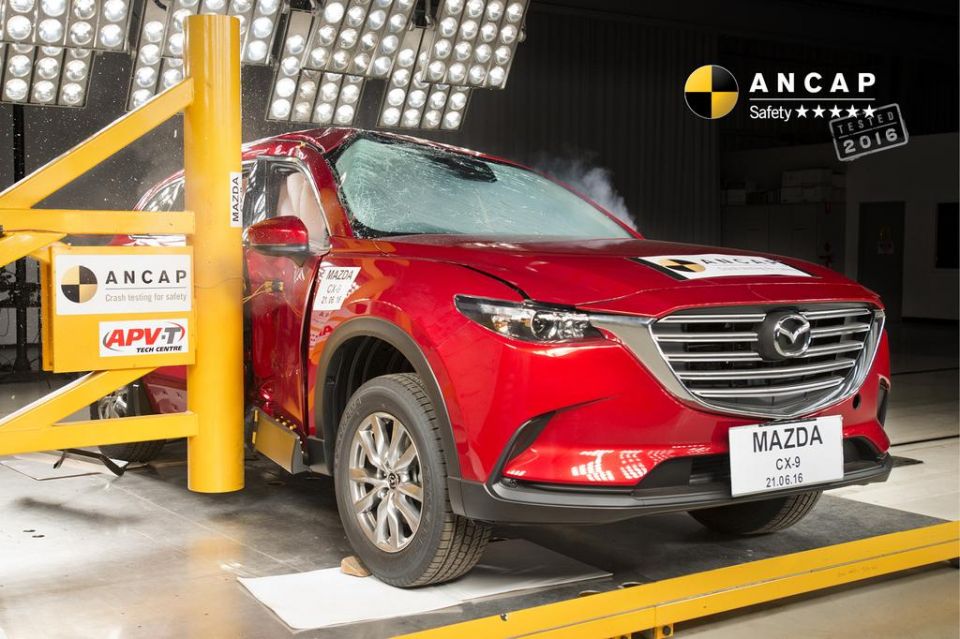
When ANCAP tested the CX-9 in 2016, it awarded it five stars. That was based on a frontal offset score of 14.87 out of 16 and Good ratings for both pedestrian protection and whiplash protection. You can read the full report on ANCAP’s website.
Standard safety equipment on all 2020 CX-9 models includes blind-spot monitoring, rear cross-traffic alert, driver attention monitoring, lane-keeping assist, autonomous emergency braking (AEB), traffic sign recognition, and a reversing camera with rear parking sensors.
Mazda calls its AEB system Advanced Smart City Brake Support. As the name implies, it doesn’t work at highway speeds. It can detect vehicles at speeds of between 4 and 80km/h and pedestrians at speeds of between 10 and 80km/h, and also works when reversing at speeds of between 2 and 8km/h.
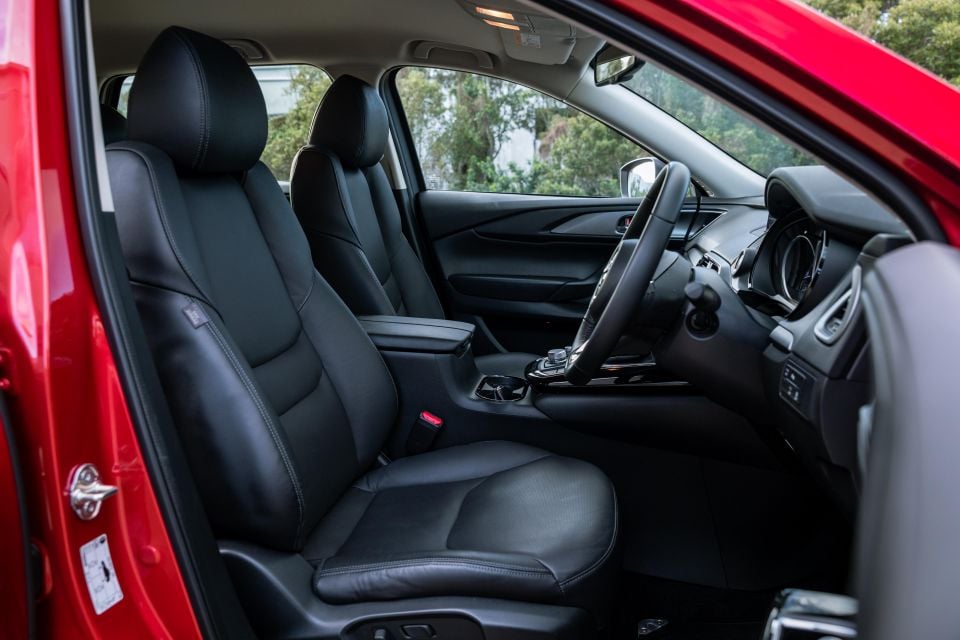
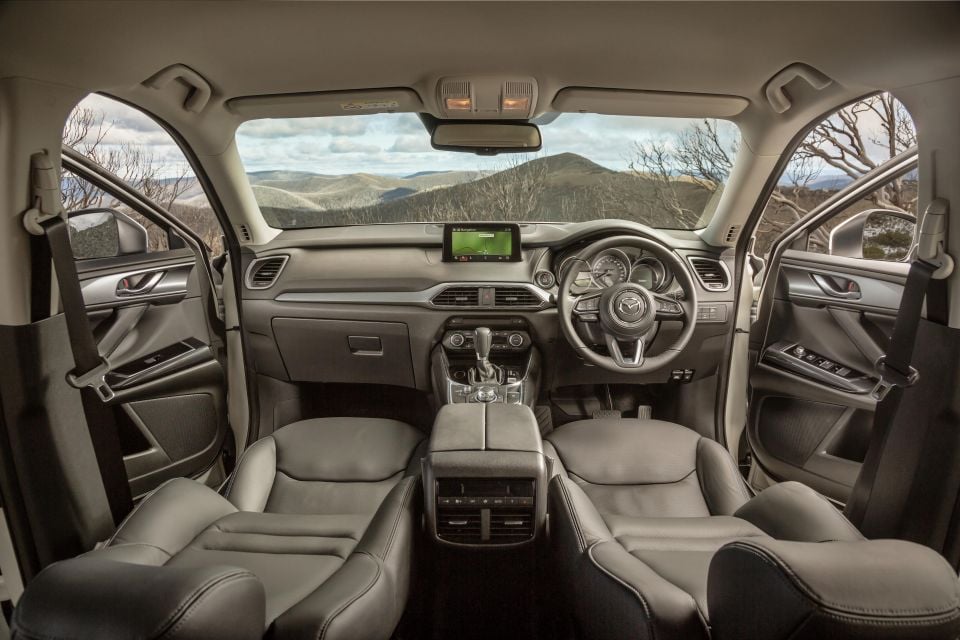
Thanks to its low cowl and minimalist centre stack, the CX-9 feels nice and airy up front while its 9.0-inch screen is in your sight line. The dashboard gently slopes away for a less upright look than some rivals, further enhancing the feeling of spaciousness.
The rotary controller falls easily to hand and is nicely weighted. It works like most rotary dials – push down for enter, rock it left to move left on the screen, etc. That’s good news as the CX-9’s screen doesn’t feature touch functionality while you’re on the move.
The CX-9 runs Mazda’s MZD Connect infotainment system, which has been superseded by the Mazda Connect system in newer Mazdas like the current 3. This new system removes touch functionality entirely which is a bit of a shame – we feel it’s ideal to offer both options in the one system, though you’ll find you’ll rarely touch the CX-9’s screen.
The system in the CX-9 is showing its age in some respects, including its somewhat dated graphics. It works well enough, however. One quirk we noticed was how the hard buttons around the rotary dial don’t return you to the main Mazda system when you’ve activated Apple CarPlay or Android Auto. Instead, you’ll need to navigate to the menu of those mirroring programs and press the option marked with a Mazda logo called Exit.
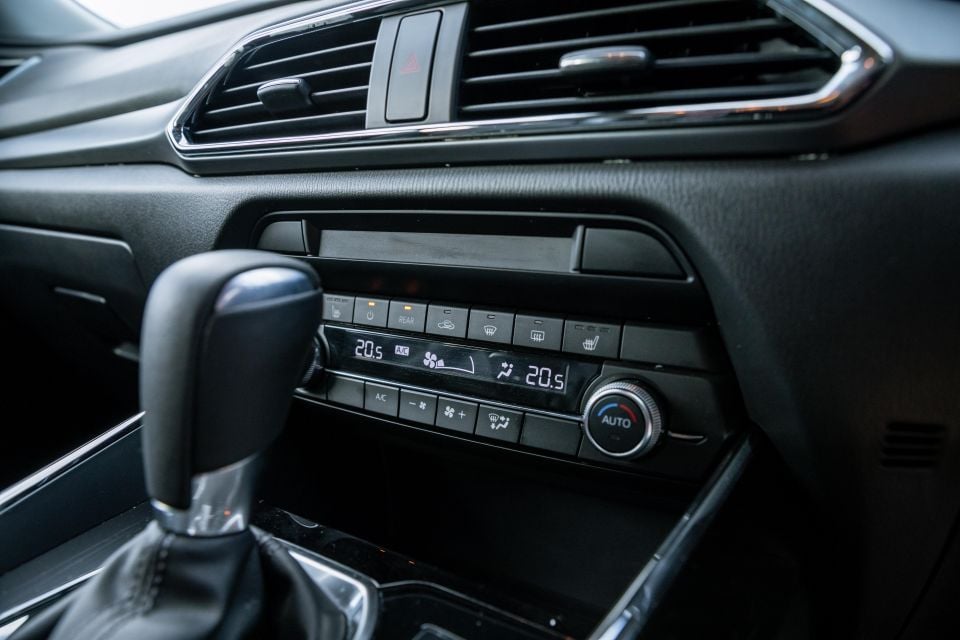
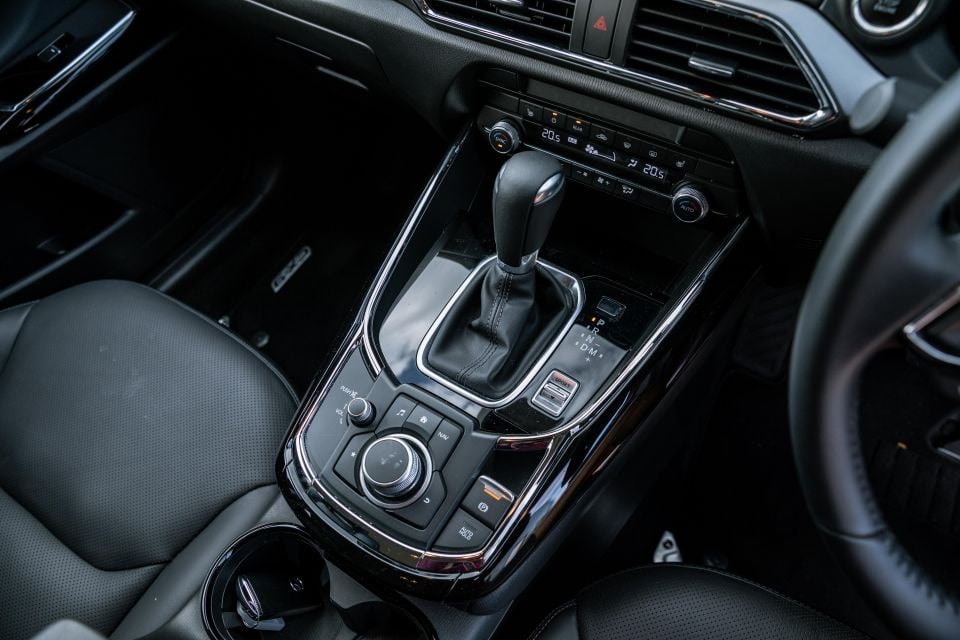
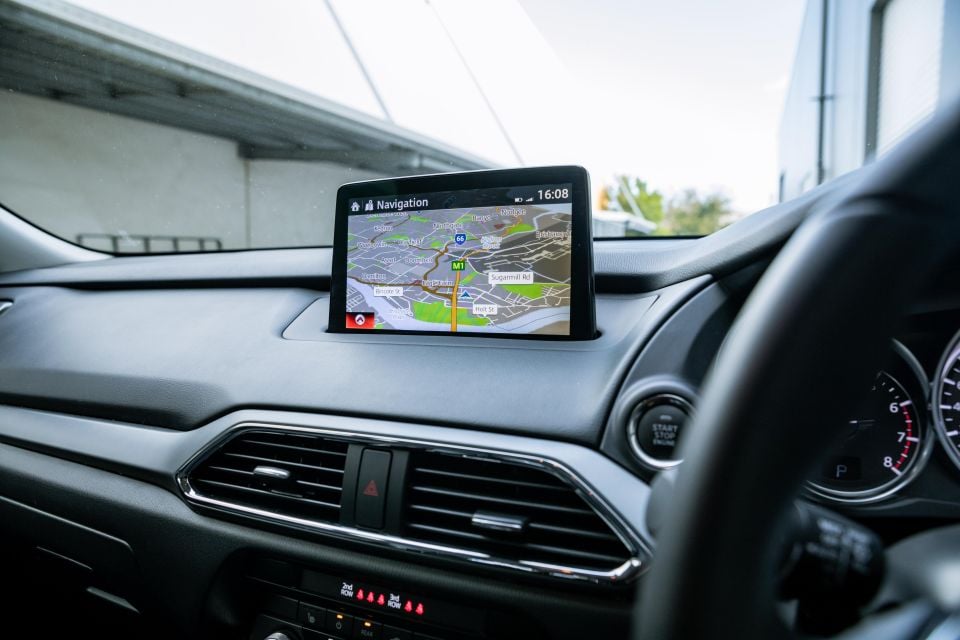
Another quirk was the system displaying a lengthy loading screen if you unplug your device and then restart your car without having your phone plugged in first, which eventually culminates in an error message. Android Auto also refused to go into night mode automatically as it does in most cars, meaning Google Maps was blindingly bright at night.
Soft-touch plastics are used for the top half of the dashboard and top two-thirds of the doors. Where we’d like to see some soft-touch plastic or leatherette is on the side of the high centre console – where your knee naturally leans against is extremely hard.
The seats are comfortable and supportive, with the Touring adding three-stage heating. Another commendable inclusion is a head-up display, something you can’t get in a Kluger and can only get in a top-spec Santa Fe. It’s a serially underrated feature that helps keep your eyes on the road and the CX-9’s lovely, legible system also displays your turn-by-turn navigation instructions.
Two USB outlets are located in the centre console bin, while a 12V outlet is on the lower dash on the passenger’s side.
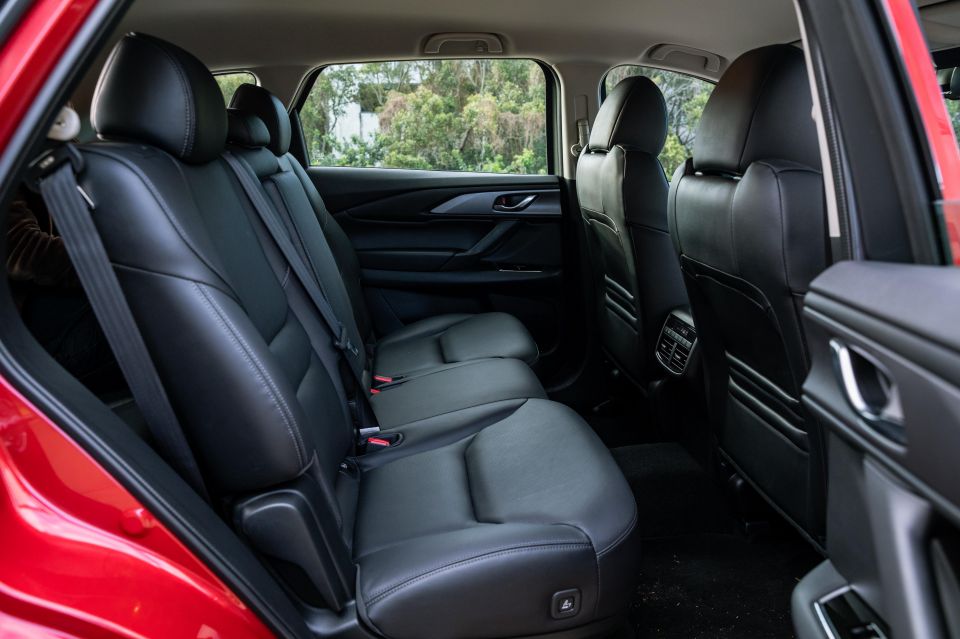
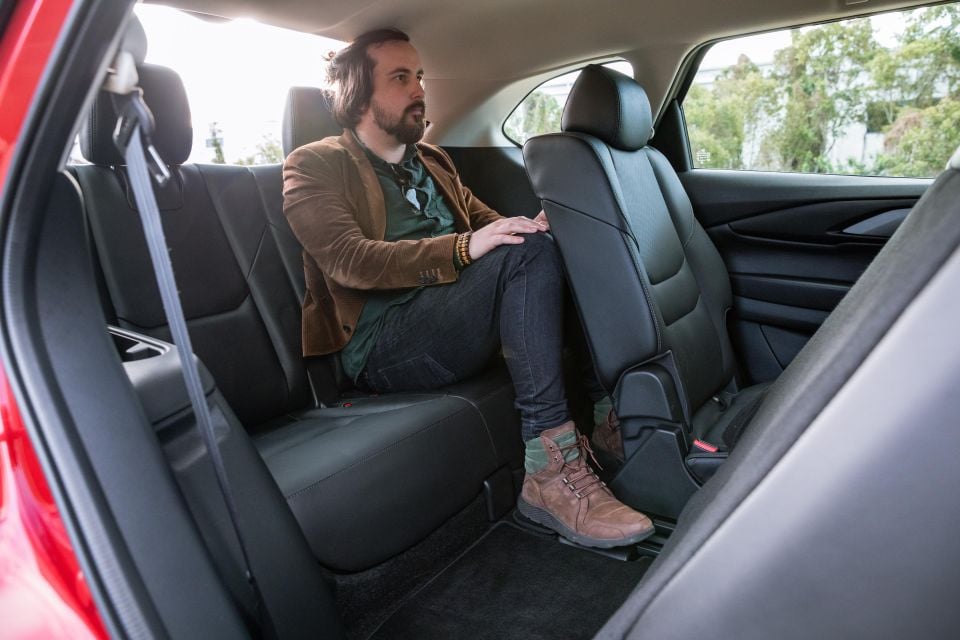
Second row comfort is hard to fault, with plenty of headroom, legroom and shoulder room. The front seatbacks are soft and feature map pockets, while the doors’ bottle holders – like those at the front – can easily swallow a 600ml bottle. Occupants can also adjust the temperature and fan speed for their climate control zone. The Touring adds a fold-down centre armrest with a storage cubby and two USB ports, plus a switch that tips the seat forward so you can slide it and clamber into the third row.
The third row technically fits two adults, provided they’re not too tall. Somebody 180cm tall will brush the roof if they practice perfect posture but sitting more comfortably, headroom just scrapes a pass. There’s also just enough toe room, with your feet sliding under the second row as snugly as putting them into a pair of socks.
Would you want to sit back here as an adult for a long trip? Probably not. Would your young children mind? Not at all. The second row bench also slides on rails, allowing you to free up some more room for third row occupants.
In the third row, each occupant has a cupholder and a little storage recess but no individual climate controls or USB outlets, though there’s a 12V outlet just behind them in the boot.
There are a total of two ISOFIX and five top-tether child seat restraint points across the second and third rows.
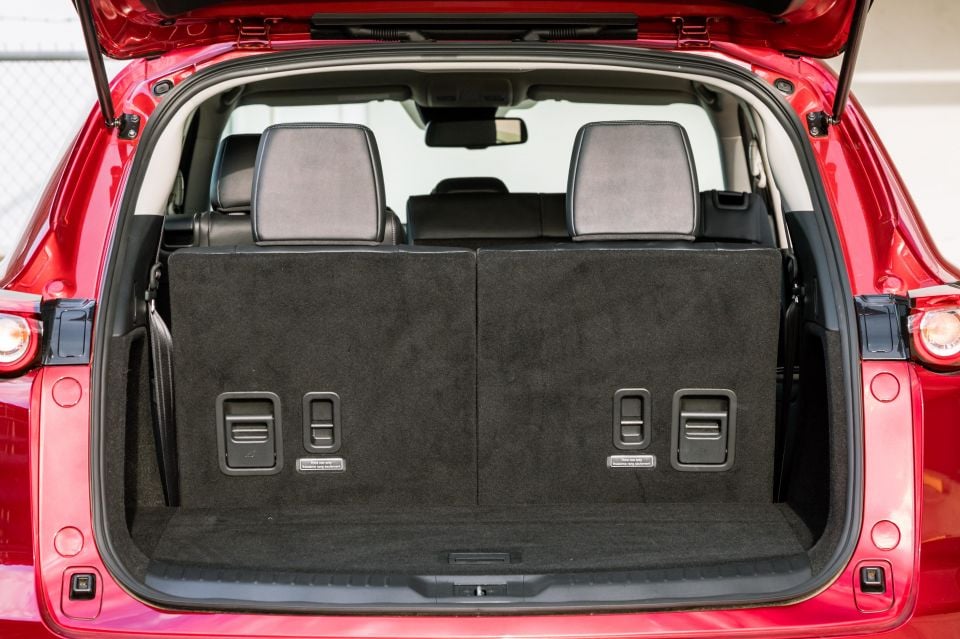

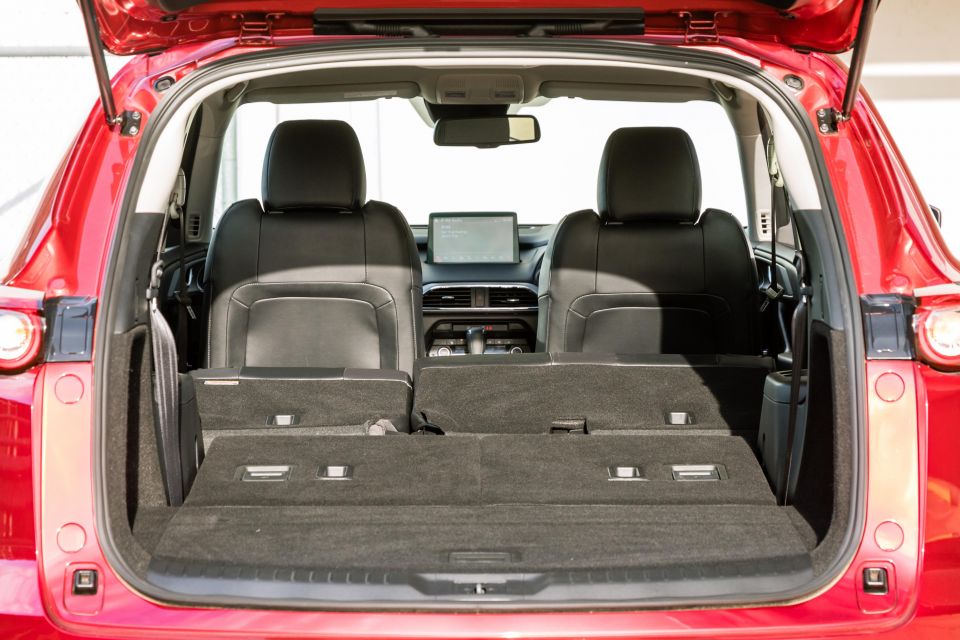
With all three rows up, you have 230L of luggage space. That’s enough for one large suitcase lying on its side but no more, with the CX-9’s curvaceous rear end resulting in an overly curved luggage area. It’s a case of style over substance – the boxier, more utilitarian-looking Holden Acadia and Nissan Pathfinder have 292L and 453L, respectively, despite being shorter overall.
Fold the third row and luggage space expands to 810L (it’s 1354L in the Pathfinder).
There’s just one powertrain available across the CX-9 range. It’s a turbocharged 2.5-litre four-cylinder engine (called Skyactiv-G in Mazda parlance) and produces 170kW of power and 420Nm of torque. It’s mated to a six-speed automatic transmission.
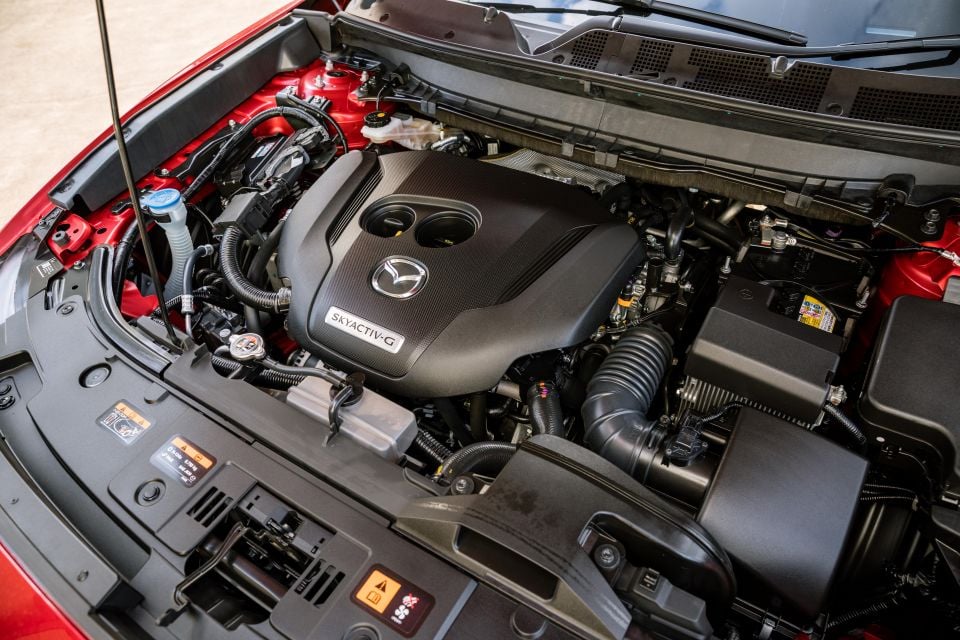
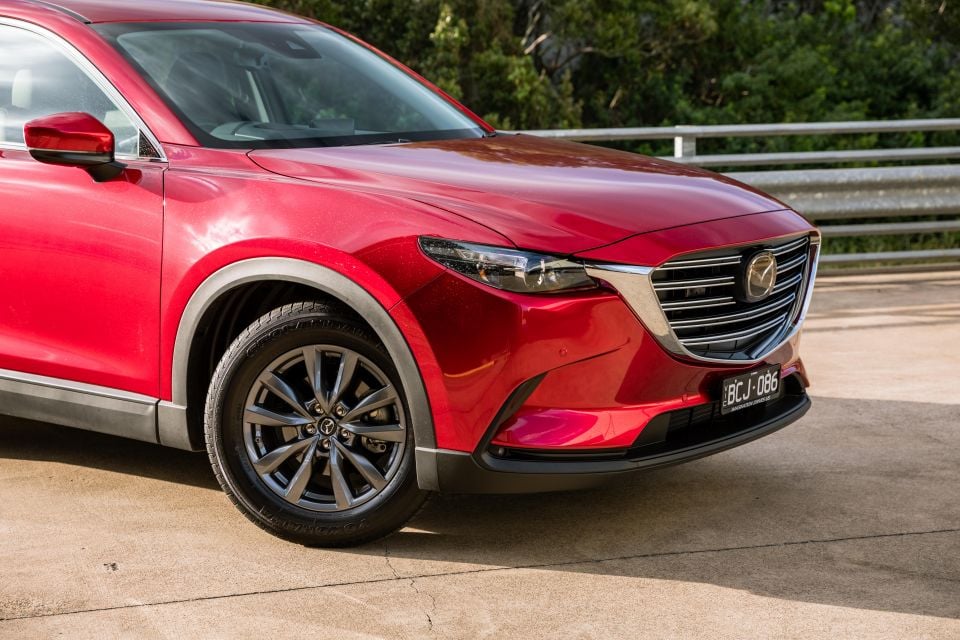
The CX-9 is the embodiment of smooth, with one exception.
Its steering is direct and well-weighted and the wheel feels small in your hands. Ride quality is pliant, the CX-9 smothering bumps and ruts with ease.
Its turbocharged four-cylinder engine and six-speed automatic work splendidly together, with smooth shifts and linear power delivery. The four-cylinder is also quite muted, further enhancing the CX-9’s overall feeling of refinement.
You’ll never want for power in the CX-9 as the 420Nm of torque is keenly felt. Unfortunately, it’s also keenly felt if you accelerate too hard.
Let’s be clear: you don’t need to rev the CX-9 to get the most out of it, with its 420Nm available at a low 2000rpm. It’s best to modify your driving style if you typically drive with a heavy right foot. Should you plant it in the CX-9, you’ll experience torque steer and the steering wheel will tug as the front wheels scramble for grip. You’ll even feel it should you push the pedal too hard when you’re already on the move. Suffice it to say, Sport mode is completely unnecessary.
Sensible drivers will appreciate the CX-9 never feeling out of breath and always finding the right gear. Aggressive drivers may want to spend the extra $4000 for all-wheel drive. We suspect most CX-9 owners belong in the former group, given this is a three-row, full-sized crossover.
Also felt via the steering is the CX-9’s lane-keeping assist system, which does an admirable job of keeping you within your lane. The traffic sign recognition works fairly well too, communicating the speed limit via the head-up display. It occasionally gets tripped up on school zones though, only occasionally grasping that the school zone speed limit is for certain times.
The combination of adaptive cruise control, lane-keeping assist and the CX-9’s superb on-road manners makes this an ideal highway car, capable of eating up hundreds of kilometres in comfort as we experienced first-hand. Little road or wind noise permeates the cabin, even at high speeds.
Around town, you’ll find the CX-9’s outsize dimensions can make this a bit of a boat to park (moor?) Unfortunately, Mazda only makes the surround-view camera available on the range-topping Azami.
We found the stop/start system to be relatively unobtrusive. It’s less aggressive than some other automakers’ systems, though that means you have to fully depress the brake pedal for it to activate.
Speaking of the brakes, they lack bite. The pedal is spongy and the brakes don’t feel fully up to the task of stopping this LandCruiser-sized, 1878kg SUV.
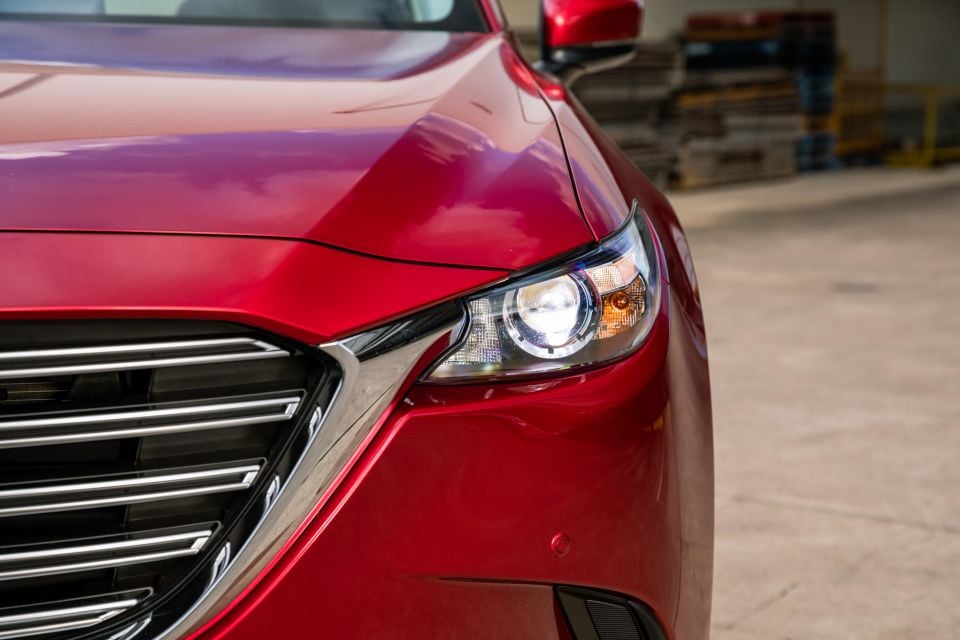
Over a mix of city and highway driving, the CX-9 averaged 11.9L/100km. Early, predominantly urban driving before I recalibrated my driving style saw this big SUV gulping fuel at a rate of more than 14L/100km, though a lighter right foot and the introduction of highway driving saw that lower.
Mazda claims 8.4L/100km on the combined cycle but that’s overly optimistic. At least the CX-9 only needs 91RON regular unleaded fuel.
If you want something that drinks less fuel and seats seven, Mazda will sell you a diesel CX-8. Though its front and rear ends resemble the CX-9, the CX-8 is based on the smaller CX-5 and is therefore 129mm narrower.
Service intervals are a relatively short 12 months or 10,000km. Mazda quotes a service price of $363 for the first, third and fifth services and $408 for the second and fourth services. The company also offers a five-year, unlimited kilometre warranty.
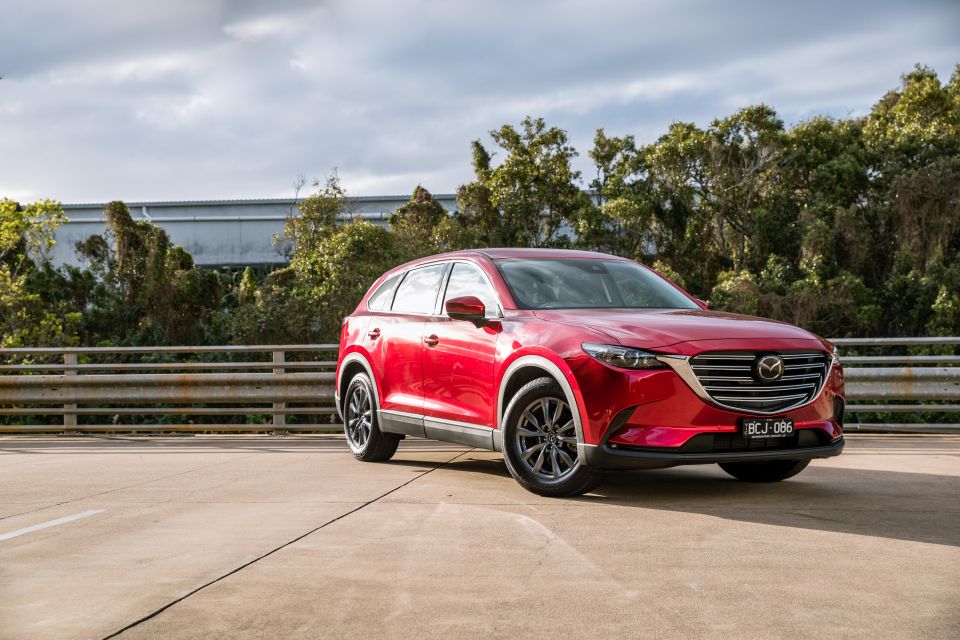
The CX-9 may be starting to show its age somewhat in terms of in-car tech but it still stands out in its segment.
It battles rivals that subscribe to a more conservative, utilitarian aesthetic (Kluger, Pathfinder) and rivals that are a bit smaller (Santa Fe, Sorento) and blazes its own path with a more style-focused exterior and yet sizeable exterior dimensions.
It doesn’t make the most of its exterior dimensions, however, with a constricted load bay. At least two adults can mostly fit in the third row, though a truly adult-friendly third row eludes most large SUVs – if you want to haul seven adults, get a Kia Carnival.
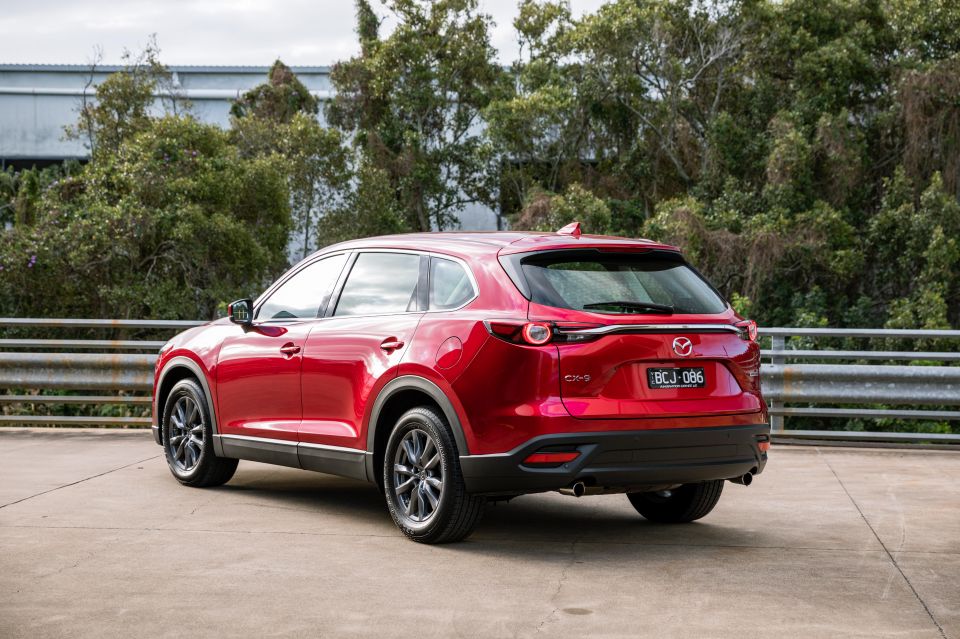
Good luck convincing most people to buy a minivan, though. The stylish CX-9 will appeal to more buyers, and impresses with its performance and overall refinement.
It’s going to have a lot of fresh competition gunning for it soon, however. It’s never been a better time to be in the market for a large, three-row crossover but it’s never been a worse time for the Mazda CX-9.
Where expert car reviews meet expert car buying – CarExpert gives you trusted advice, personalised service and real savings on your next new car.
William Stopford is an automotive journalist with a passion for mainstream cars, automotive history and overseas auto markets.


Derek Fung
28 Minutes Ago
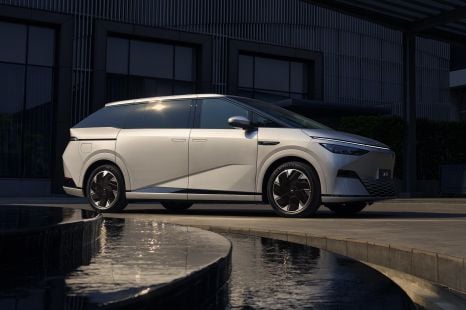

William Stopford
23 Hours Ago


Max Davies
23 Hours Ago
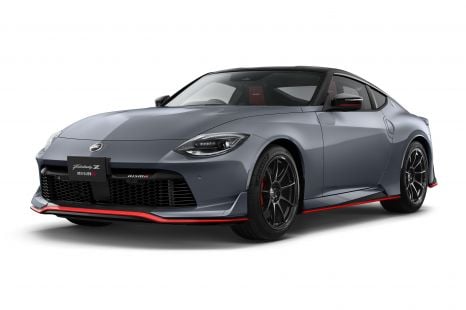

Derek Fung
1 Day Ago
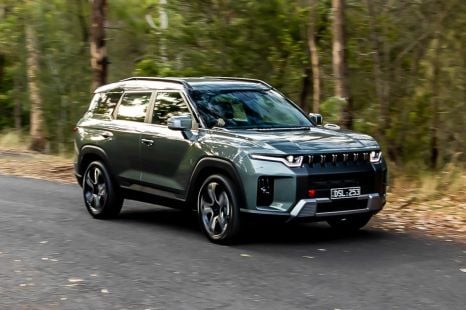

Matt Campbell
1 Day Ago


Ben Zachariah
2 Days Ago